|
Counting the cars on the New Jersey Turnpike,
They've all come to look for America ...
— Simon & Garfunkel, America, 1968
|
Contemplating the Westbound Traffic
In the Fall of 1984 I took a year off from The University of New Hampshire. I had just finished my Freshman year, but didn't want to continue until I had a clearer sense of why I was there. Part of my goal was to ponder what I should do with my education, and the other part was to live at home in Haddonfield, New Jersey to save money for a trip West the following spring on the motorcycle I'd recently acquired. One day around the beginning of October I got home from work early in the afternoon. The early autumn sun was high and the air was warm, so I decided to take a ride and enjoy what might be the last warm day of the season. I-295 With a jacket on the back of the bike for later, I rode out of Haddonfield in my shirt sleeves to the entrance to Interstate 295 North on Warwick Road. This was the closest interstate to my house and I used to enjoy getting onto the highway for a few exits to put the bike into top gear, feel the full rush of wind, and savor a brief taste of freedom. Now that it was fall I was going back and forth in my mind about the decision to take a year off, but I had made my choice and I was committed to it. I knew that the idea of leaving college to travel was out of fashion at that time, and it seemed that most other students my age were concerned with getting into high-paying jobs and making their first million. There was a lot to be said for maintaining your velocity in your education, but what if that velocity was taking you in the wrong direction, as well as putting you in debt at the same time? Surely standing still by choice was better than moving backward. In the end I always came to the same conclusion: now that I was on this road I needed to see where it took me. I cruised a few miles up 295 and got off the highway at the intersection with Route 73, which was a loop I had done before. It was a good exit to turn around, but it was also the first exit to the north of Haddonfield where you could go from the easily accessible I-295 over to the more limited-access New jersey Turnpike (I-95) that ran parallel to it. I was planning on riding by the Turnpike tollbooth as usual, but as I didn't know if this was my last long ride for a while I pulled in, got my toll ticket, and joined the flow of northbound traffic, headed toward New York City. If this was the last good ride of the summer then I didn't want it to end too quickly. The New Jersey Turnpike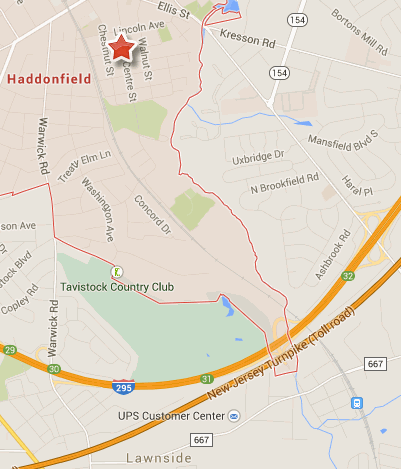 I was very familiar with the New Jersey Turnpike. New York City was where my father's family lived, and I had driven up that road many times in my life. Both the Turnpike and I-295 actually went though Haddonfield, traversing a tiny toe of the town that jutted out into the neighboring communities. I always found this small point of contact emblematic of my own feelings about the highways; hidden away from view, yet always close at hand. You couldn't see it from town, but at night you could hear it, murmuring in the distance. It seemed to be the very antithesis of the quiet and stable town that I knew, and yet it was actually a part of it, joined at the very root. I had taken some trips as a child, but like generations of young people before me, I had first been inspired to focus on travel for its own sake through reading On the Road while at Haddonfield High School. Though I was taken with Kerouac and Cassady, I knew even then that they were only the more recent incarnations of the American Traveling Spirit. While The Beats may have popularized the pursuit of enlightenment through travel, they were hardly the first or the last to work over that ground. The Long Shadow of New York CityWe are a nation that was born from wanderlust, and like so many children of Europe, New York City had been the start of those journeys for centuries. New York Harbor was the home of Ellis Island, the gateway to the golden door of America that so many millions of immigrants had longed for and passed through — my own family included. It was where they set foot in American and from whence their American journey began before they fanned out across through the cities, towns and farms where their descendents still live. It was the origin of the old Lincoln Highway, the first attempt stitch together a single road across the entire country. New York City was epicenter of The East. It was where my roots lay — but at that time in my life my mind was more focused on where I wanted to go than on where I'd already been. I rode north, enjoying being a part of the flow of the highway. Alone on my motorcycle I felt perfectly complete. I found the contact with the people in other cars an interesting part of the experience; glances at people who are unusually vulnerable and open as they sit in their glass-walled sofa as if they are passing an afternoon at home. They are somehow more open and sometimes the brief eye contact with a passing motorcyclist gets a long look. There's something searching about looking at other people in traffic, and I always felt that people were unguarded and natural while they were in transit in a way that they aren't when they're in the midst of their 'normal' lives. 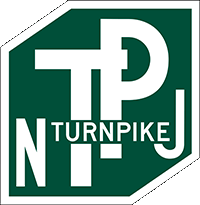 I assumed that I would turn around at one of the exits further up the turnpike when I started to feel tired of riding, but I wasn't tired — I was savoring the road in front of me and the thoughts in my head; not just a musty memory from a 1950's paperback, but a living, breathing feeling that fired me with life and connected me to the world. I had gotten a lot from my readings of The Beats, but I wasn't trying to follow a dead social moment — I was feeling alive and connected to myself and the world, and that connection was most keenly felt when I was on the road. I couldn't help that I had missed the popularization of that kind of freedom by 20 years, and I didn't care. I was following a call that pulled at something very deep within me. I-276I was deep in thought when I noticed that I was approaching the exit for I-276 west; the connecting highway that spurs off of the New Jersey Turnpike, vaults the Delaware River via a high-rise bridge, then descends on the other side to feed it's the lines of traffic onto the Pennsylvania Turnpike. I had ridden my motorcycle up the New Jersey Turnpike before and even south out of New Jersey to visit friends going to school in the State of Delaware, but so far I'd only moved north and south. I saw my opportunity to do something new, to do something I had longed for, so I steered my bike into the setting sun, and headed West. The Pennsylvania Turnpike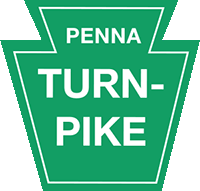 The bridge over the Delaware River is 265 feet high at its center, and from the top of the bridge the land spread out in front of me, sitting peacefully in the late afternoon sunshine. I could not help be think of the settlers who poured across this river and into this land from across the ocean in the centuries before. Leaving the confines of New York City this expanse of openness must have felt limitless to them as they squinted into the sun, trying to see a small piece of land with their name on it and could envision themselves and their families in their new lives in their new home. PennsylvaniaEastern Pennsylvania evokes a complex set of feelings for me; there is mixture of colonial, agricultural, industrial, and suburban. Three centuries of ideals, methods and schemes played out over the lush forests and rich dirt of the Delaware Valley, carried on the backs of masses of individual people. While New Jersey seems to sit still and fixed in its position along the eastern seaboard, extending down from New York and isolated by the Delaware River, Pennsylvania stretches West. With its eastern end connecting by water to the Atlantic it is firmly wedged in the center of the original 13 colonies — the Keystone State in the arch (as the state motto reminds us). It's length is where it reaches westward, connecting the Atlantic with Ohio, well into the heartland and inward-facing toward the Great Lakes more than The Old World to the east. If the expanding nation was our destiny then getting us there was Pennsylvania's. 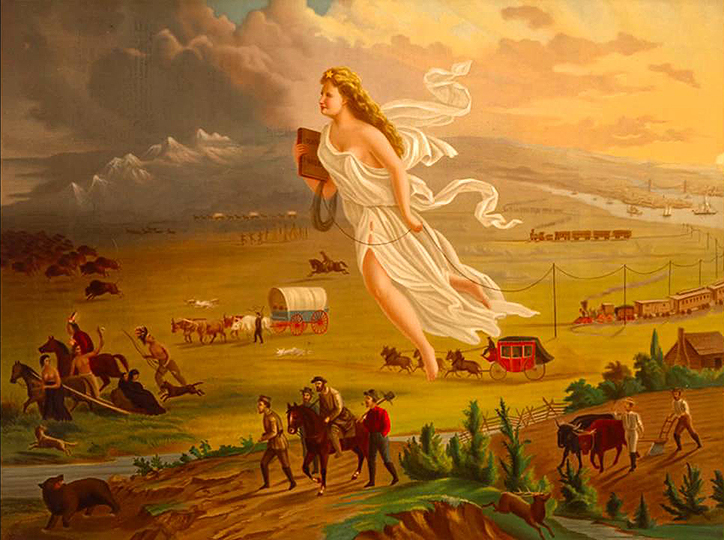 'Manifest Destiny'
John Gast, 1872
A study in the whitewashing of history:
The annihilation of the people at the lower left is wrapped in the white robes of Manifest Destiny. The men at the lower center appear ready to complete the process, With New York Harbor at the top right, this view would fall in Eastern Pennsylvania. The road across Pennsylvania was well-traveled by roving masses of people. From the Lenape tribes who had been chased out or exterminated by the Dutch and Swedish settlers in the 1600's, then the English in the 1700's giving way to the German and Irish in the 1800's to Eastern Europe in the 1900's. The waves of immigration had washed over this valley time and again in their race to populate the land. They dropped their blood, sweat and tears into the soil, and left the decaying remnants of those who let go of life in the process to mingle with the dirt beneath their marching feet. Residue of MigrationThe mixture of old and new, the vestiges of pre-revolutionary landmarks intermingled with decaying factories and modern housing developments. So many people had flooded across this land that it was hard to get one feeling from it; it exudes a stew of emotions and impressions. Those settlers who came to Pennsylvania to settle and farm didn't always stay put, moving back and forth throughout the area. The Armies of America had marched through as well, from the colonials crossing the Delaware while fighting the Revolutionary War. Sending their grandsons marching off to fight in the Civil War, with many falling a few miles in front of me at Gettysburg. The sons and fathers who went back to Europe in World Wars I & II. The waves of internal immigrants following opportunity and fleeing poverty who left the family farm that their parents or grandparents had settled to find their own American Dream. The Great Migration of African Americans who flowed steadily north from the Jim Crow South for the century after the Civil War to look for fulfillment of the promise of Emancipation and change the complexion of Northern cities and towns forever after. There was a lot of living in that soil. I rode a few miles into Pennsylvania feeling that I finally broken new ground on this bike, but I could see that daylight would soon be fading and I could not go much further without a long ride home in the dark. I had broken the seal on my journey west and taken a taste of what it held for me, but I could not drink deeply this season — I had neither the time nor the means. Ahead was a sign for an upcoming service area, so that seemed like a good place to turn around. A bite to eat and a mediocre cup of coffee would fuel me for the trip home. The Neshaminy Service AreaI parked by the far edge of the lot near the highway and went inside to get a burger in one of the fast food joints. I sat and ate in the fluorescent Formica hallway while an endless parade of travelers passed in front of me. There's a melancholy sadness about the highway that hits me in rest areas. I thought of the settlers who passed this way, lonely for something like home and hopeful that this is where they'd find it, but so many of them fleeing death, destruction or persecution at home. I thought of the hobos of the 1930's who'd traveled these same roads looking for work, along with some redemption of the promise of The American Dream that had deserted them. I thought of Kerouac who had mentioned passing Neal Cassady in the sad, anonymous night of this very road in 1947. I thought of the travelers passing before my eyes that minute; sad families, tired truckers, world-weary salesmen, each of them looking for something — or else resigned to the temporary purgatory of the road, waiting impatiently for their journey to be over and their regular lives to resume. It was a bittersweet place to want to spend one's time, but still it pulled me in. ContemplationAfter finishing my dinner I bought a cup of coffee and walked out into the twilight. Sitting on the curb next to my bike with my coffee I stared at the waning rush hour traffic in the eastbound lanes before me, plowing incessantly toward New Jersey. 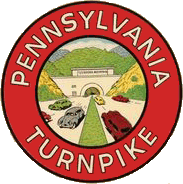 This stretch of The Pennsylvania Turnpike passed only a few miles north of where I had lived as a small child in North Philadelphia, and I had relatives in that area still. My grandparents were buried on a hill with a view of this road, as if standing sentry beside the avenue of migration. From this spot I could see the entire arc of my life to that point; from the suburbs of Philadelphia to a small town in South Jersey, up the Turnpike through New York, into to New England and back again in a long loop. This is where I came from and this is where I lived. With the notable exception of one bus trip to Colorado, all that I had known was along this bit of The Pennsy Turnpike, as well as the chunk of the Jersey Turnpike between South Jersey and southeastern New Hampshire. My world was defined by highways. Getting up off the curb to sit on my bike for a little better view, I changed my focus to the far lanes of the highway, partially obscured behind the highway median. There was the westbound traffic. Most of them undoubtedly heading home to dinner tables throughout eastern Pennsylvania, but scattered among them were some headed on a longer journey. Ohio. Nebraska. Colorado. Somewhere in there was someone going all the way to the Pacific. I couldn't tell who they were from my curb in the parking area, but I could feel their journey. The motion of migration in the US is east to west, following the settlers first, and then the cars. I was an easterner. That meant that the future must lay to the west. My heart was with them, but I could not follow them. Not yet. I didn't need to promise myself that I would one day join them — I'd done that a long while before. HomewardWhen the coffee was gone I tossed my cup in the garbage, put on my helmet and my jacket, and started the bike. With a last look at those heading west, I turned reluctantly to join the flow of eastward traffic rolling across the Delaware River into New Jersey. That day and that summer were gone, and my exploration had come to an end. One day I would pass Neshaminy on my way West, but it would be three years later and under very different circumstances than originally planned. |